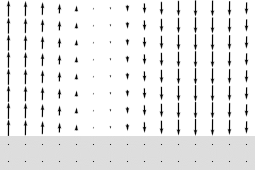User:GLPeterson
| This page in a nutshell: I'm here to participate in a collaborative, collective intelligence learning experience. |
"From the inception of the wireless system I saw that this new art of applied electricity would be of greater benefit to the human race than any other scientific discovery, for it virtually eliminates distance. The majority of the ills from which humanity suffers are due to the immense extent of the terrestrial globe and the inability of individuals and nations to come into close contact. . . ."
[edit]
Work
[edit]WP:WikiProject Energy
WT:WikiProject Energy
WP:WikiProject_Physics
WT:WikiProject_Physics
WP:WikiProject_Electrical_engineering
WT:WikiProject_Electrical_engineering
Microphonic contact
[edit]A signal processing technique developed by inventor-engineers Reginald Fessenden and Nikola Tesla between 1892 and 1901 that creates a new output frequency by combining or mixing two other input frequencies. . . . Cite error: The <ref> tag has too many names (see the help page).[1][2][3]
- ^ Christopher E. Cooper (January 2001). Physics. Fitzroy Dearborn Publishers. pp. 25–. ISBN 978-1-57958-358-3. Retrieved July 27, 2013.
- ^ Graf, Rudolf F. (1999). Modern dictionary of electronics, 7th Ed. USA: Newnes. p. 344. ISBN 0-7506-9866-7.
Beat receiver/receptor
[edit]
Wireless power transfer
[edit]Magneto-inductive coupling or inductive coupling, Magneto-inductive phenomena
[edit]Resonant inductive coupling
[edit]Electro-inductive coupling or Capacitive coupling, Electro-inductive phenomena
[edit]Capacitive coupling (electro-inductive coupling), is the conjugate equivalent of inductive coupling (magneto-inductive coupling).
Resonant capacitive coupling
[edit]Electrical Conduction
[edit]Atmospheric plasma channel coupling
[edit]Earth transmission line coupling
[edit]EXCITATION AND USE OF GUIDED SURFACE WAVE MODES ON LOSSY MEDIA
Jagadish Chandra Bose's experiments
[edit]Mahlon Loomis' experiments
[edit]Nikola Tesla's experiments
[edit]https://en.wikipedia.org/w/index.php?title=Wireless_power_transfer&oldid=746613847#Tesla
The Leyh-Kenan Demonstrations
[edit]Corum & Corum, et al.
[edit]Near-field and non-radiative technologies
[edit]Nikola Tesla's experiments supplemental
[edit]Two widely different experiments
[edit]The Experiment presented as evidence.
[edit]The true C/S magnifier specifications.
[edit]Earth electrical resonance and Stationary terrestrial waves
[edit]Articles
[edit]


Surface Impedance Boundary Conditions (SIBC) allow efficient modeling of conductors with a sufficiently strong skin effect. The direct modeling of such conductors with an appropriate MMP expansions for the field inside the conductor and with usual boundary conditions on the surface of the conductor is possible, but numerically very inefficient. First of all, the wavelength inside a good conductor is short and the field varies rapidly. Therefore, a high matching point density on the boundary and a large number of multipole expansions in the close vicinity of the boundary are required for accurately modeling the field. Note that the field outside the conductor can vary much less rapidly. Therefore, fewer matching points and a simpler MMP expansions are required for the exterior field. The distance between matching points can even be much greater than the wavelength inside the conductor. [1]
The classical electrodynamics Leontovich boundary condition relates the tangential components of the electric Et and magnetic Ht fields on the surface of well-conducting bodies. [Landau and Lifshits, 1982.], [M. A. Leontovich, On the approximate boundary conditions for the electromagnetic field on the surface of well conducting bodies. Moscow: Academy of Sciences of USSR, 1948.]
"The postulate of ancient science on the perfection of circular motion which set abstractions on the facts of astronomical observations and for a long time determined not only the nature of the first theories of celestial mechanics, but also the approach to the mathematical description of physical phenomena by means of exponentials."[1]
The Greek philosopher Plato is credited with the introduction of the dogma of the circle. It was expressed by Claudius Ptolemy as follows: "We believe that the object which the astronomer must strive to achieve is this: to demonstrate that all the phenomena in the sky are produced by uniform and circular motions."
A United States War Department engineer. a former Federal Communications Commission engineer . . . Winner of The Franklin Institute Ballantine Award in 1954 for contributions in the field of radio propagation. The Norton ground wave is named after this individual.
Norton published a set of flat earth radio propagation curves in 1936.[1] The final Norton curves give normalized ground wave field strength vs. distance for various conductivities, fixed permittivity (εr = 15), and a selection of frequencies. Norton’s plots for 540-1640 kHz, ultimately ended up as the 20 famous charts in the FCC Rules and Regulations.[2]
1. K. A. Norton, “The Propagation of Radio Waves over the Surface of the Earth and in the Upper Atmosphere – Part I,” Proceedings of the IRE, 24, 1936, pp. 1367-1387.
2. FCC Rules and Regulations, Volume III, Part 73, US Government Printing Office, March 1980. See §73.184, Graphs 1-19A, “Ground Wave Field Intensity vs. Distance” and Graph 20, “Relative Field Intensity F(p)/p vs. Numerical Distance p”.
3. K. A. Norton, “The Propagation of Radio Waves over the Surface of the Earth and in the Upper Atmosphere: Part II,” Proceedings of the IRE, 25, 1937, pp. 1203-1236. [See: Corrections,” by R. J. King, Radio Science, 4, No. 3, March 1969, p. 267.]
4. Kenneth A. Norton. Transmission Loss in Radio Propagation. We will be concerned primarily with the transmission loss encountered in the propagation of ...
| This user is a member of the Association of Inclusionist Wikipedians.
The motto of the AIW is conservata veritate, which translates to "with the preserved truth". |

|
| Multi-licensed with the Creative Commons Attribution Share-Alike License versions 1.0 and 2.0 | ||
| I agree to multi-license my text contributions, unless otherwise stated, under Wikipedia's copyright terms and the Creative Commons Attribution Share-Alike license version 1.0 and version 2.0. Please be aware that other contributors might not do the same, so if you want to use my contributions under the Creative Commons terms, please check the CC dual-license and Multi-licensing guides. | ||
